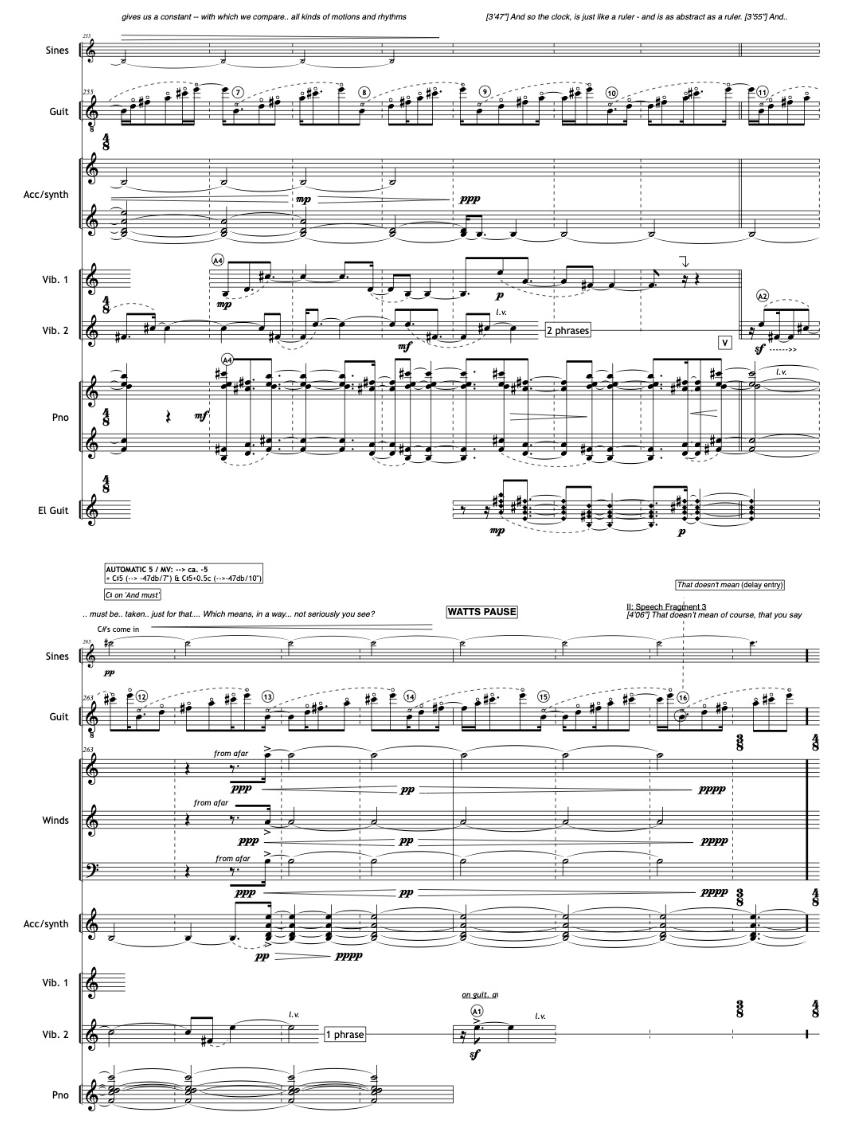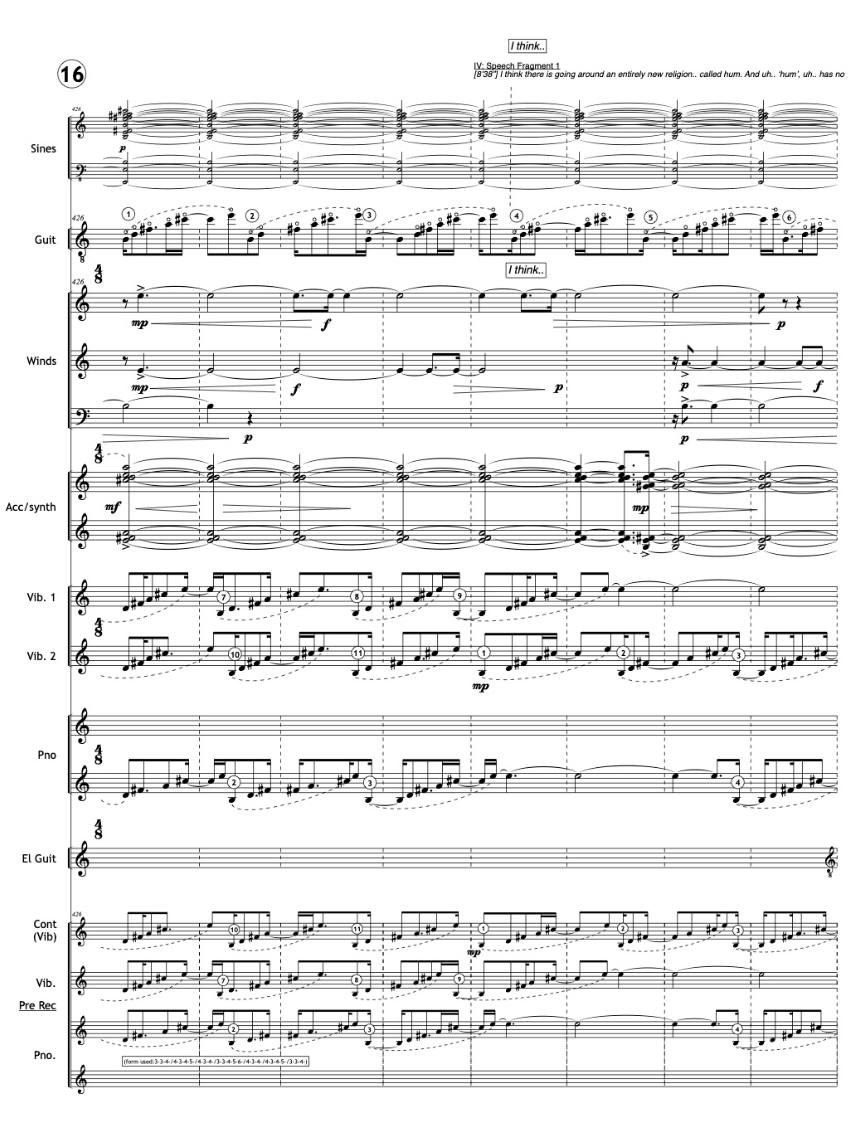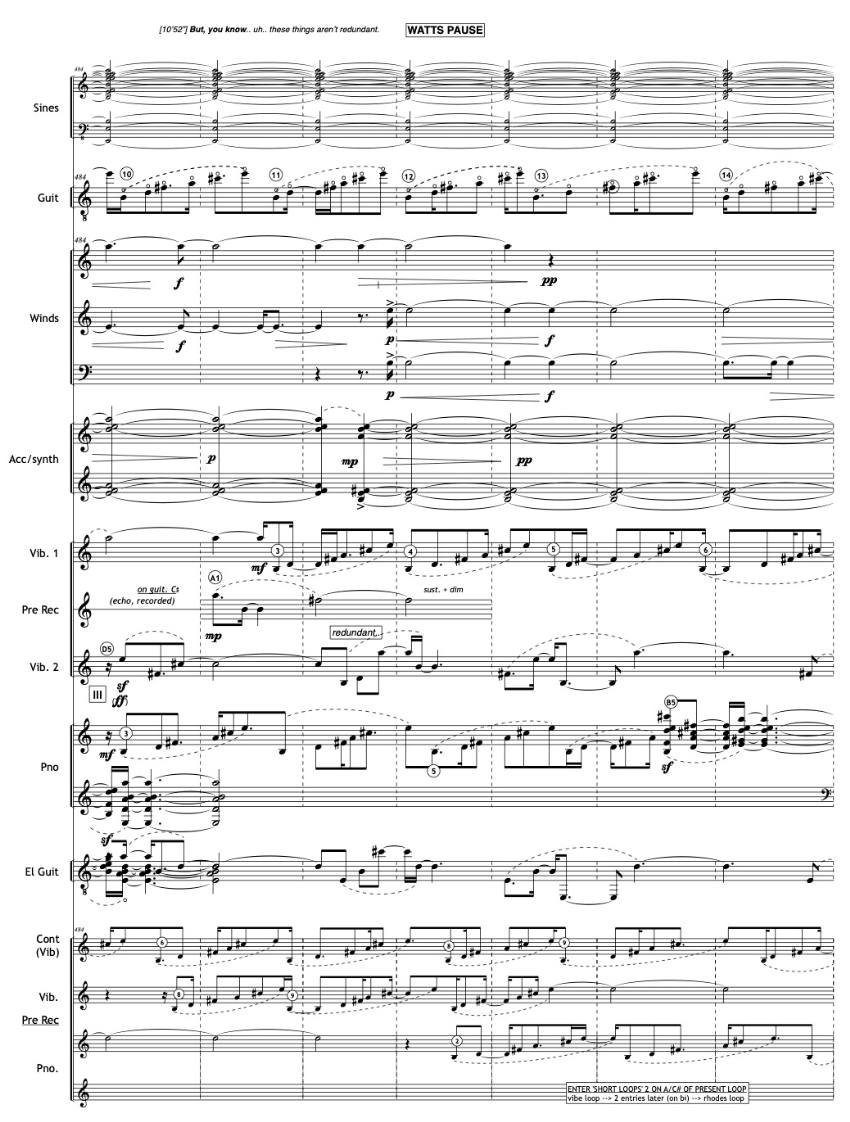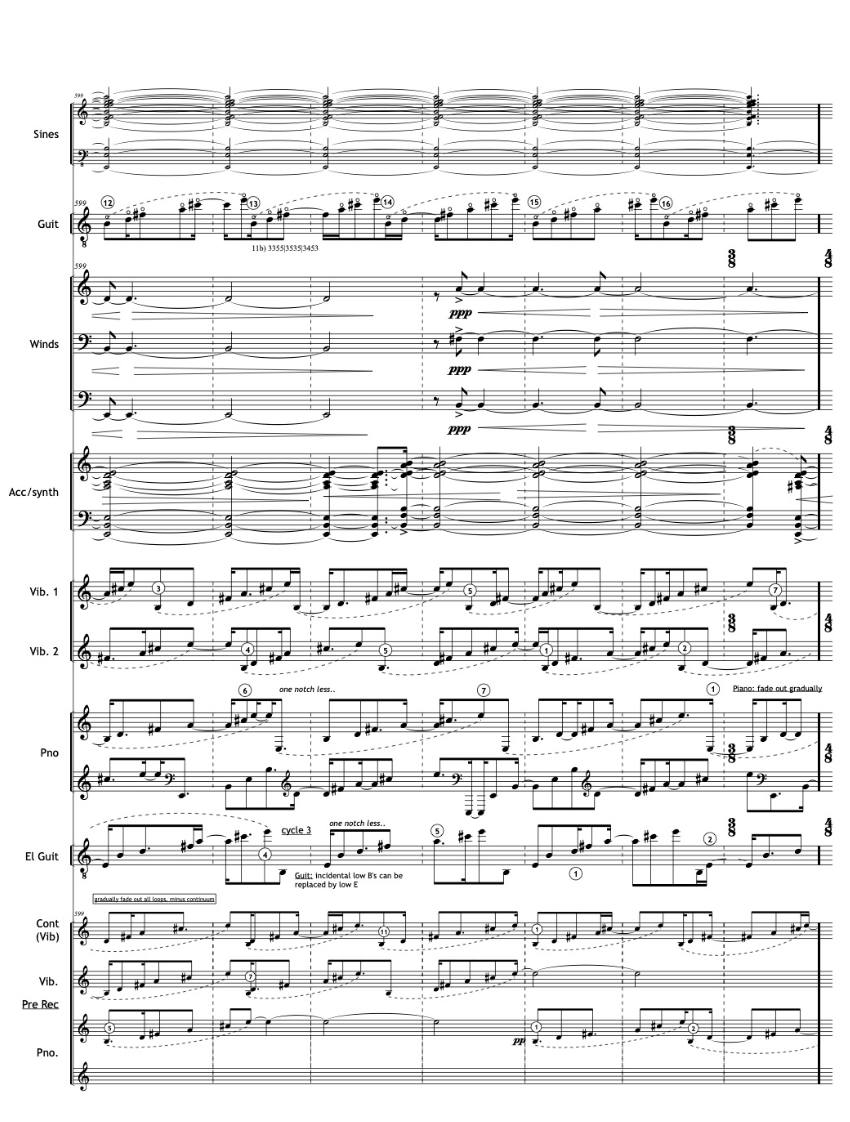No 61/2 Watts (2018)
for amplified ensemble, sinewaves & pre-recorded tracks
Commissioned by: Ensemble Klang XL, with financial support from the Netherlands Fund for the Performing Arts
First Performance: March 10 2018, Festival Dag in de Branding, Elektriciteitsfabriek, The Hague
Instrumentation: solo acoustic guitar, 2 saxophones, trombone, 2 vibraphones, bayan, fender rhodes, electric guitar, live electronics & pre-recorded tracks
Duration: 30'
Special Features: Performance requires sound engineer, amplification for all musicians, click tracks throughout, 6 speaker surround sound setup, live electronics, Ableton sound patch, 6 different guitars and 2 synthesizers
Additional information: Ensemble Klang website
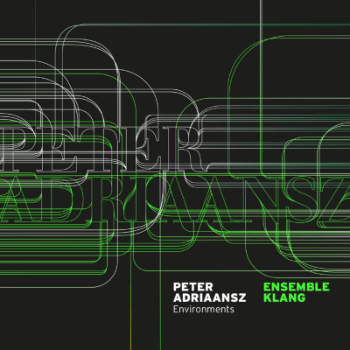 Listen/Buy: Ensemble Klang on Bandcamp
Listen/Buy: Ensemble Klang on Bandcamp
Info/Program note:
Watts is the second part of Environments and can be performed on its own or as a part of this larger cycle. Watts uses the identical rhythmic form employed in Mono but now redefines the six 'unison strings' as a continually repeating 6-note arpeggio, set for solo acoustic guitar, 3 winds, Bayan, 2 vibraphones, Fender Rhodes, Electric guitar, Sinewaves and pre-recorded tracks. The main bulk of Watts is essentially one long canon, consisting of a multitude of little self-referential melodic cells which with each new entry renew themselves at the front while the former cells recede to the back in sentences of ever-increasing length, thereby serving both as a form of acoustic echo as well as a symbolic image of continually receding memory. Not unlike a snake eternally biting its own tail. Once initiated by the first vibraphone the other 'solo' instruments gradually enter, expanding the harmony as well as the number of echos in the air and serving as a sort of replica of 'the watch' as well as 'the compass' ('not only left and right', but also 'above and below').
The content of Watts revolves around two central ideas: that of the 'continuum' and that of 'cyclicity'. 'Cyclicity' is pretty much covered in the circling sound design, the setup of the players, the eternal ups-and-downs of the ostinato and the long- developing, ever-renewing cells where the first thing is always the last. The idea of the continuum, hidden as it is meant to be, however reveals itself only as the speaker introduces it.
The speaker in this case is the famous Beat Philosopher Alan Watts, well-known for his many books and radio broadcasts of the 1950's and '60's (and known again to the current generation by his seductive vocal cameo in the Hollywood movie Her). The speech was actually found right in the middle of the composition-process, when most of the music and its flow were already long-established and in fact quite immutable. As an experiment to test the effects of 'context' (following some lively debates with students) I decided one day to simply lay the speech over the already established contrapuntal flow to see what would happen. To my great surprise both tempo and flow of the speaker, for at least 80% of the entire speech, seemed to naturally fall into the flow of the music, on the way unexpectedly 'pointing out' musical properties which may have already been there but suddenly became endowed with some kind of 'meaning' (thereby instantaneously 'proving' the potential of context...). Little doubt thereafter of including it. For the greater part the speech was then preserved as is, retaining most of Watts' original flow but chopping the 12' speech up into 4 separate chapters with slight pauses between various fragments to line up with instrumental entries.
The inclusion of the speech left its immediate impact on the content of the music, such as in the gradual emphasis on the continuum (as time and memory recede the 'background' gradually increases), the pursued 'lushness' of the textures and even the 'electric hum', which finds itself hidden somewhere in the basement of the gradually evolving 'Watts chord' in the sinewaves.
Needless to say the beautiful world spelled out by Watts ('no organization, no hierarchy, no doctrines.. only music and ritual') became quite an ironic affair when trying to reconstruct its actual operating in a - highly organized - piece of music. In that sense one could say the piece failed utterly, given that merely 'experiencing' is after all something quite different than 'making'.
